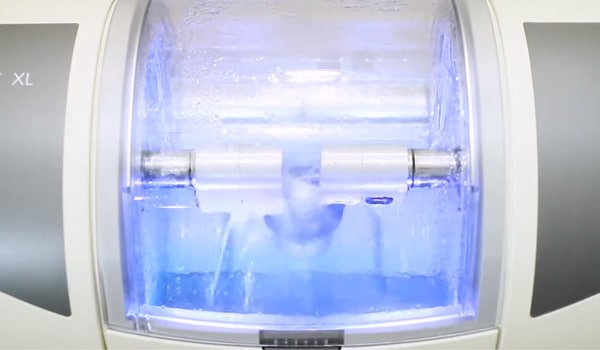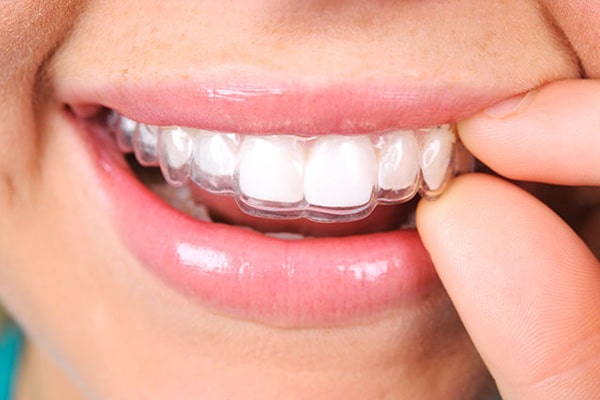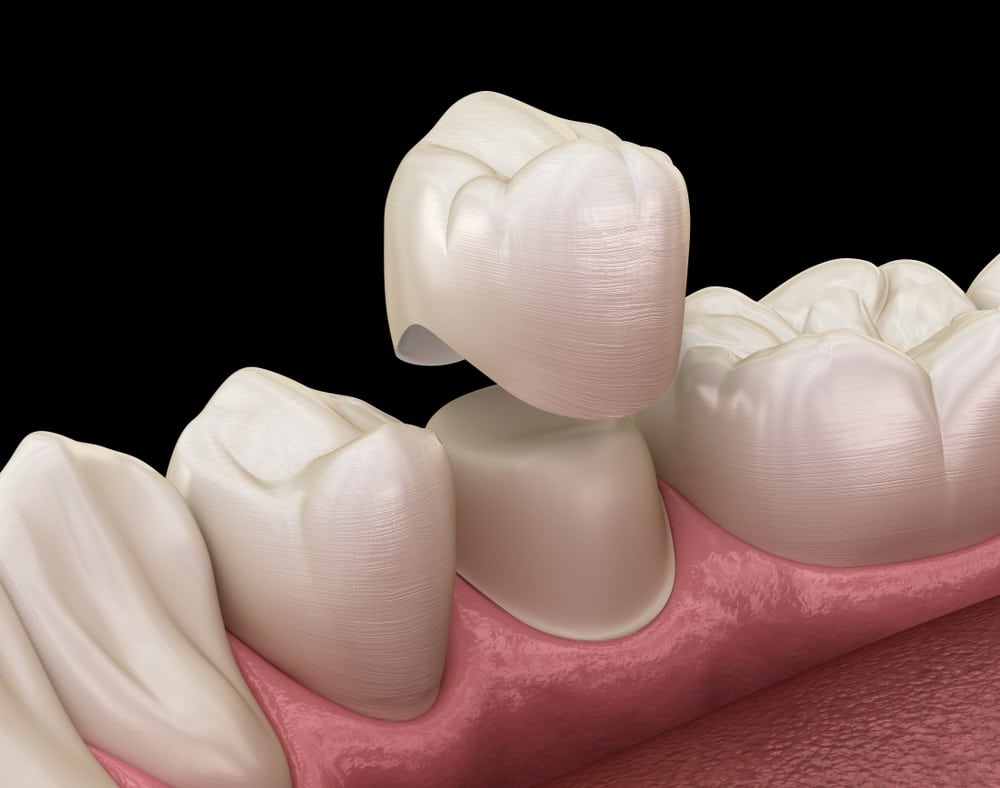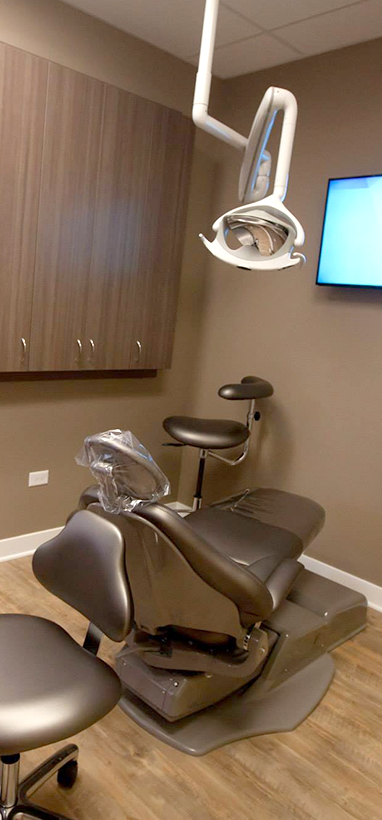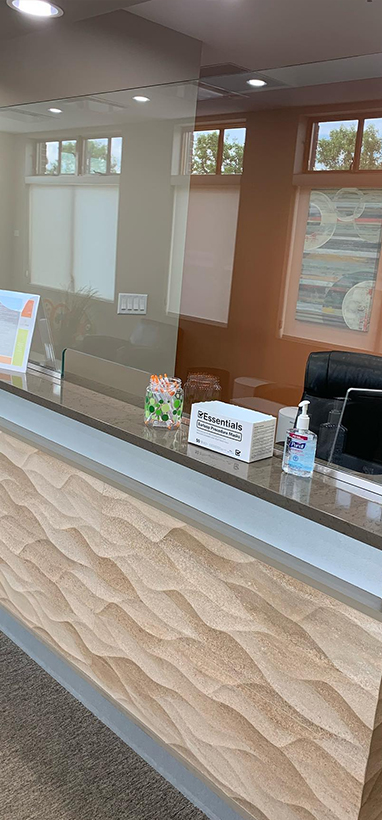1516 Legacy Cir, Naperville, IL 60563
Cavity (Tooth Decay Process): What It Is and How to Prevent It

Most people have heard of a cavity, and many people have had them at some point in their lives, but do you know what they really are? A tooth cavity can cause a series of other health problems relating to your mouth and other parts of the body, it can cause pain and sensitivity, and it can ultimately lead to tooth loss.
If you’re concerned about your dental health and want to keep your teeth in check, be sure to check in regularly with your dentist (we have a great team here in Naperville, Illinois!) and read on to find out more about tooth decay and symptoms to look out for.
What Is Tooth Decay?
Tooth decay is the destruction of the layer of enamel that surrounds your teeth. This protective layer ensures your teeth aren’t exposed to the huge amount of bacteria that exist in your mouth and don’t ultimately degrade and become unhealthy. Our layer of enamel can wear down over time particularly if you eat lots of acidic or sweet foods and beverages, or if you do not practice good dental hygiene.
Cavities, or dental caries, are also particularly common in children. That’s not because children’s teeth are weaker, but because the younger you are the more likely you may be to eat sugary food without brushing your teeth afterward!
As soon as that layer is worn down, whether it’s through food or the various other triggers that can cause this, the bacteria in our mouths begin to break through into the tooth and begin to eat away at it. The plaque left behind by the bacteria speeds up this process. When this happens, you’ll first experience tooth sensitivity and when left untreated, eventually be left with a dead tooth that cannot be saved.
Tooth decay is entirely common, and while it’s important to keep on top of your dental health, it’s not something you should be concerned about if you catch it early. A qualified dentist can help save your tooth, introduce you to better habits that will prevent it from happening again, and offer a range of treatments to reinforce that enamel layer on your teeth.
Tooth Decay Symptoms
Tooth destruction, perhaps unsurprisingly, can be painful. Cavity symptoms vary but they’re all fairly logical and expected symptoms that would come from a rotting or damaged tooth. If you notice any of the following symptoms, see your dentist right away, and you’ll be able to minimize further damage and potentially save the tooth.
Tooth decay signs include:
1. Toothache
Toothache is one of the early signs of tooth decay, and also a symptom that will persist as it gets worse. The tooth affected will be painful and ache plenty as it gets worse, though this pain will eventually go away once the root is completely dead. So don’t assume the absence of toothache is always a good sign!
2. Pain when biting
Pain when biting is another part symptom of early stage tooth decay and it occurs as a result of the food you’re eating coming into direct contact with a damaged part of your tooth that is not protected by enamel.
3. Brown/white/black staining on teeth
Staining on your teeth isn’t good, and usually indicates that there is a problem with the enamel on your tooth or that there is a substance wearing away at that enamel. If you notice staining on your teeth as well as some of the other symptoms on this list, it’s time to talk to your dentist about tooth decay and make sure your teeth are healthy!
4. Pain when eating hot, cold, or sweet food
Tooth sensitivity is caused by the wearing down of the enamel and is an extremely common sign of tooth decay. If you feel pain when eating hot or cold food, or you can feel sensitivity just by breathing in cold air, you could have tooth decay.
5. Holes
It goes without saying that holes are serious warning signs. If you start seeing visible holes at the pits of your teeth then you should see a dentist urgently, as this is typically one of the later stages of decay.
What Causes Tooth Decay?
There are plenty of cavity causes, and we’ve already discussed one – sweet foods. If you regularly consume sweet or acidic foods you change the pH level of your mouth, encourage the growth of extra bacteria, and wear down the enamel coating on your teeth.
In adults, the process of gum recession can also put you at greater risk of developing tooth decay. If the flesh of your gum wears away and exposes the roots of your teeth it provides ample space for bacteria to multiply and produce plaque. If this plaque is not properly cleaned away through brushing, flossing, and regular dental visits, then you can expect decay to start at the bottom of the tooth and spread.
Ultimately, decay is caused by bacteria – and that bacteria either breaks through enamel coatings by not cleaning thoroughly, or accesses the tooth through cracks and existing damage.
Knowing what causes cavities is your best protection against developing them, but you should also be aware of the stages of tooth decay.
Tooth Decay Stages
Tooth decay starts with chalky white spots on your teeth. This is a build-up of plaque that is caused by bacteria feeding on starch and sugars that haven’t been fully cleaned away from your teeth. This first stage is where tooth decay is most easily reversible. If you brush regularly, use fluoride toothpaste, and remember to floss, then you can keep plaque at bay and stop further damage to your teeth.
If you don’t catch it at this stage, however, then it quickly moves on to the decay of the enamel coating around the tooth. The damage has been so bad that the enamel cannot be naturally restored, creating a gap in the tooth that bacteria will take advantage of. At this stage, dental work is necessary to prevent further damage to the inner flesh of the tooth.
If you do not seek dental assistance at this point, then the dentin of your tooth will begin to decay. This is the substance between the pulp – the inner part of the tooth – and the enamel. At this point, the pain gets worse. You’ll feel sharp pains when eating all sorts of foods, and possibly most noticeably when consuming hot or cold foods. This is the stage where fillings are required to maintain the integrity of the tooth and protect against bacteria.
Beyond this stage, the pulp will be damaged in the center of your tooth. This is made up of living tissue and softer flesh that produces the dentin. If the pulp becomes damaged and infected then it will kill off the nerves in the tooth and blood supply will be restricted. You will feel constant pain and aching, and at this stage, a root canal treatment is necessary to save the tooth.
An abscess is the final stage of tooth decay and will hurt even more than it did during previous stages. It means that the infection has reached the very bottom of the root of your tooth and risks infecting other parts of your face. It will typically result in major swelling or your gums and tongue, and will often require surgery to resolve it.
Beyond this, you should expect the tooth to die. It will need to be extracted professionally by a doctor.
Types of Cavities
There are three types of cavities you should be concerned about – all of which can be treated if caught early enough.
1. Pit and Fissure Cavities
Pit and fissure cavities typically occur on the rear molars, and they start on the top surfaces of your teeth used for chewing. You’ll experience the most pain when biting down on food as that’s where the cavity has started.
2. Root Cavities
Root cavities occur on the root of a tooth and are therefore more likely to occur in older people who have receding gum lines.
3. Smooth-Surface Cavities
A smooth-surface cavity will occur on the side of your teeth. They take the longest to develop and are not as common as the first two kinds, though they are perfectly possible to develop if you do not practice good dental hygiene.
How to Prevent Tooth Decay
Want to know how to stop tooth decay? You might be surprised by how simple it is. Take a look at some of the following tips and you’ll be on your way to preventing decay and keeping your teeth healthy.
1. Brush After Meals
Brushing after meals is important as it removes sources of food for bacteria on your teeth. The longer you wait the harder it might be to wash away food stuck between your teeth. Brushing frequently best protects the enamel on your teeth.
2. Visit Your Dentist Often
Visit your dentist frequently and early warning signs will be spotted and quick treatments applied to ensure early tooth decay doesn’t develop into something more serious.
3. Avoid Frequent Sipping/Snacking
If you’re drinking a sugary drink, try to enjoy it in one sitting and avoid drinking it over long periods of time. Use the same rule for snacking. This minimizes the impact on the pH of your mouth and gives you time to brush your teeth, ensuring bacteria doesn’t have a full day to grow and feed off the food you’ve been eating.
4. Use Mouthwash and Fluoride Treatments
Mouthwash and fluoride treatments help wash away starches and sugars from your mouth, and also provide your tooth enamel with important support.
FAQs
Access Highly Effective Tooth Decay Prevention From Dental Experts In Naperville, Illinois
At Living Well Dental Group, we offer important tooth decay prevention treatments and much more to patients in Naperville, Illinois, and the surrounding area. If you’re struggling with serious tooth decay or you’ve noticed some early warning signs, book your appointment online today.
You can also give us a call on (630) 325-7700 and a member of our team will be happy to walk you through your options and schedule a full examination.


